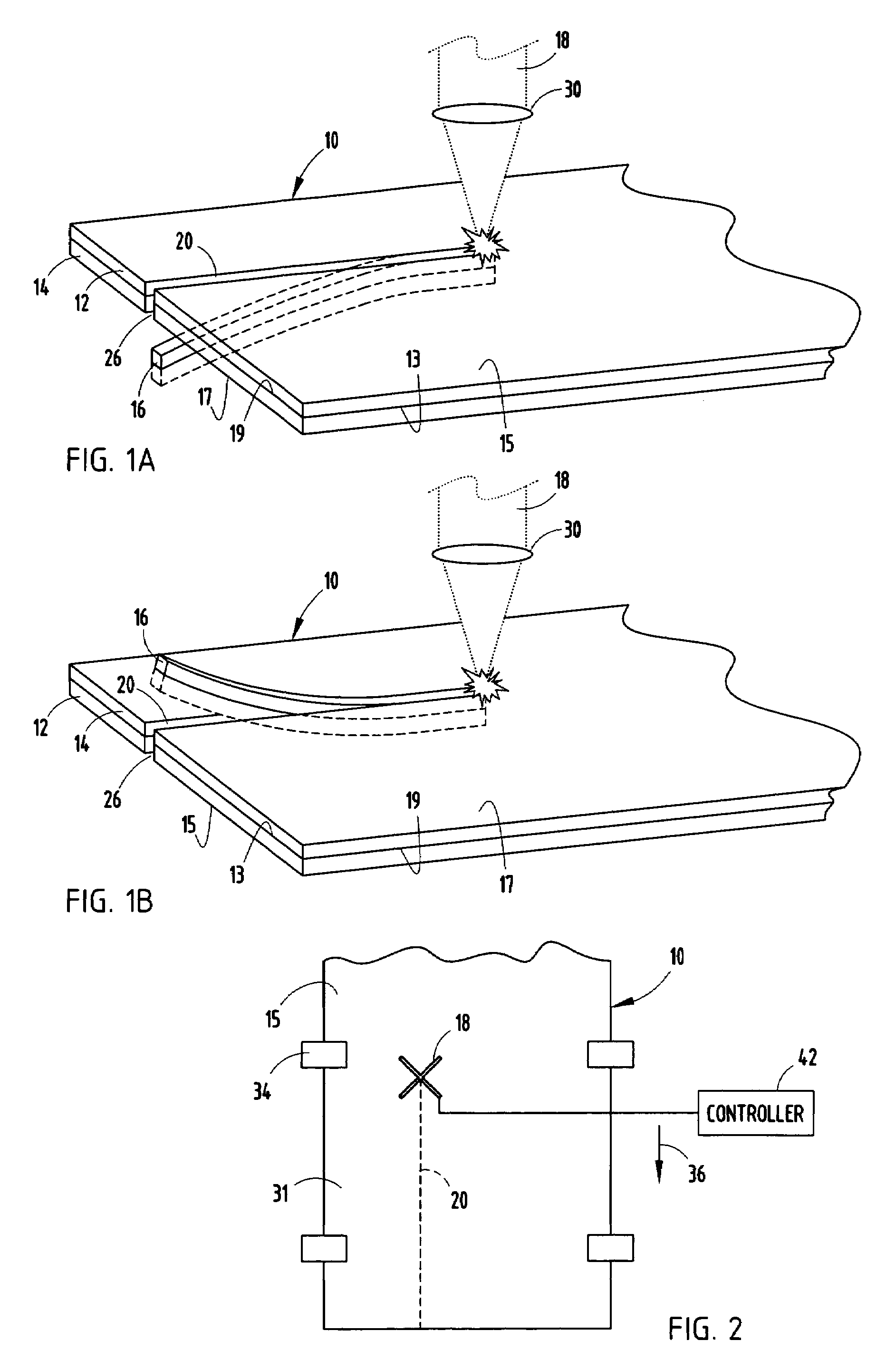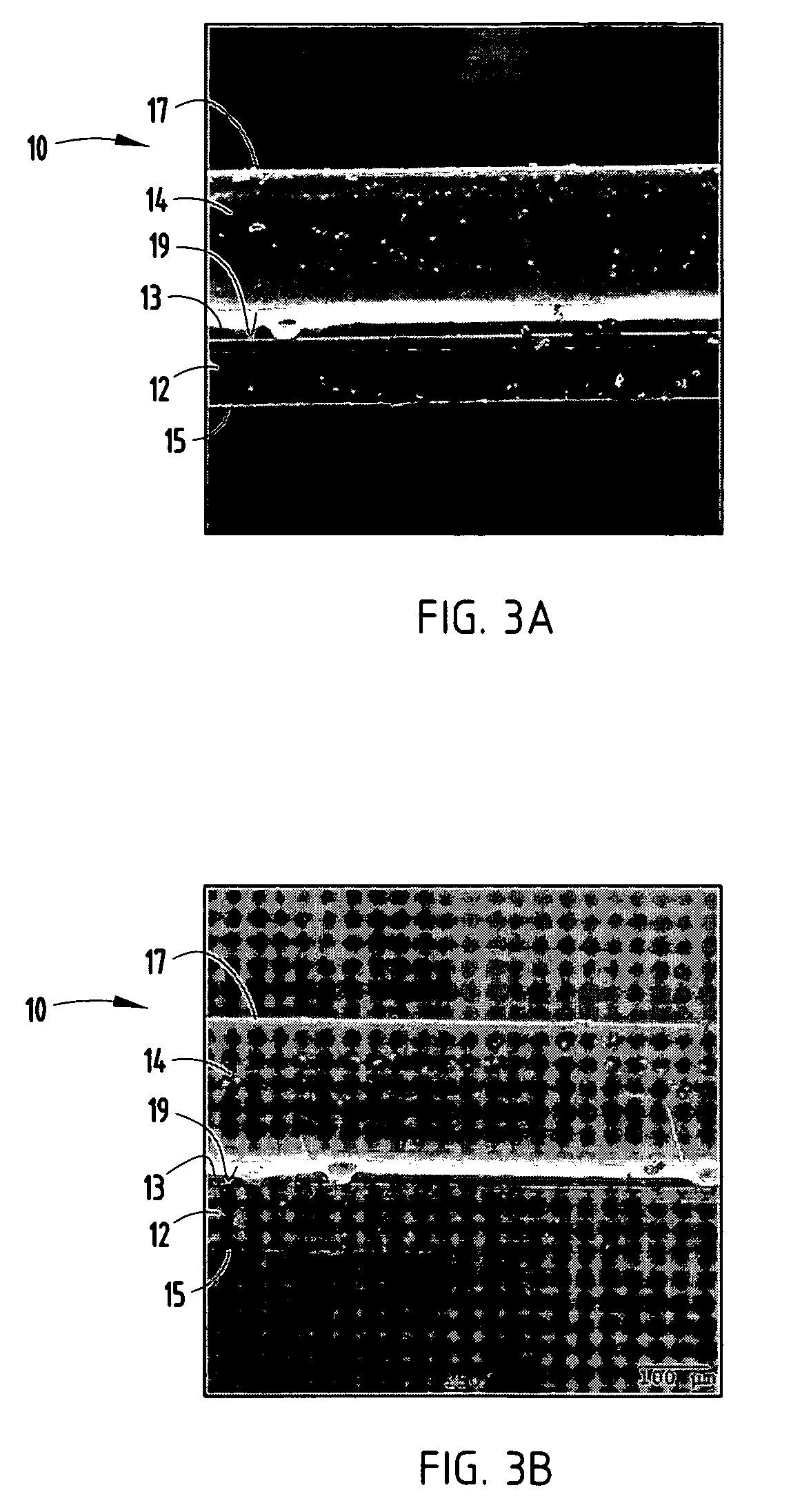Laser separation of thin laminated glass substrates for flexible display applications
a technology of laminated glass and laser separation, which is applied in the direction of glass making apparatus, manufacturing tools, welding/soldering/cutting articles, etc., can solve the problems of glass materials, sensitivity to flaws, and electrical conductivity problems,
- Summary
- Abstract
- Description
- Claims
- Application Information
AI Technical Summary
Benefits of technology
Problems solved by technology
Method used
Image
Examples
example 1
[0030]The test and sample comprised an application of a laser to the exposed glass surface of a glass sheet, and controlled cutting was obtained in a single pass of the laser. In one particular embodiment, a Synrad RF CO2 laser, available from Synrad, Inc., Mukilteo, Wash., was used as the light source. The laser was modulated at a 5 kHz rate, with the output pulses having a saw-tooth profile, with roughly 90% modulation depth. Light from the laser was vertically polarized. After a quarter-wave reflective phase retarder, polarization was transformed into a circularly polarized state prior to the focusing element 30. A 37.5 mm or 1.5 inch focal length lens was used to focus the laser light on the glass sheet surface 15. Incident laser power on the coated material surface was 23 W. Based on an M2 value of 1.2, and a beam size at the lens entrance pupil of 6 mm, the focal spot size was estimated to be 100 μm with corresponding power density of 300 kW / cm2. The sheet of coated material c...
example 2
[0031]In another example, a Synrad RF CO2 laser, as described in Example 1, was used to remove the polymeric coating in the composite material. The laser was modulated at a 5 kHz rate, with the output pulses having a saw-tooth profile and roughly 90% modulation depth. Light from the laser was vertically polarized. A 37.5 mm or 1.5 inch focal length lens was used to focus the laser light on the glass sheet. Polarization of the laser light on the coated material 10 was along the motion path. An incident power of 8 W was used. Based on a M2 value of 1.2, and a beam size at the lens entrance pupil of 6 mm, the focal spot size was estimated to be 100 μm. The sheet of coated material comprised a glass sheet having a thickness in the range of 50 microns and 100 microns and a polymer coating thereon adhered to one side of the glass. A 0211 Microsheet, as available from Corning, Inc. of Corning, N.Y., was used as the glass layer. Ultron Systems (of Haverhill, Mass.) P / N 1020R-11.8 or P / N 104...
PUM
| Property | Measurement | Unit |
|---|---|---|
| thickness | aaaaa | aaaaa |
| speed | aaaaa | aaaaa |
| bend radius | aaaaa | aaaaa |
Abstract
Description
Claims
Application Information
 Login to View More
Login to View More - R&D
- Intellectual Property
- Life Sciences
- Materials
- Tech Scout
- Unparalleled Data Quality
- Higher Quality Content
- 60% Fewer Hallucinations
Browse by: Latest US Patents, China's latest patents, Technical Efficacy Thesaurus, Application Domain, Technology Topic, Popular Technical Reports.
© 2025 PatSnap. All rights reserved.Legal|Privacy policy|Modern Slavery Act Transparency Statement|Sitemap|About US| Contact US: help@patsnap.com



